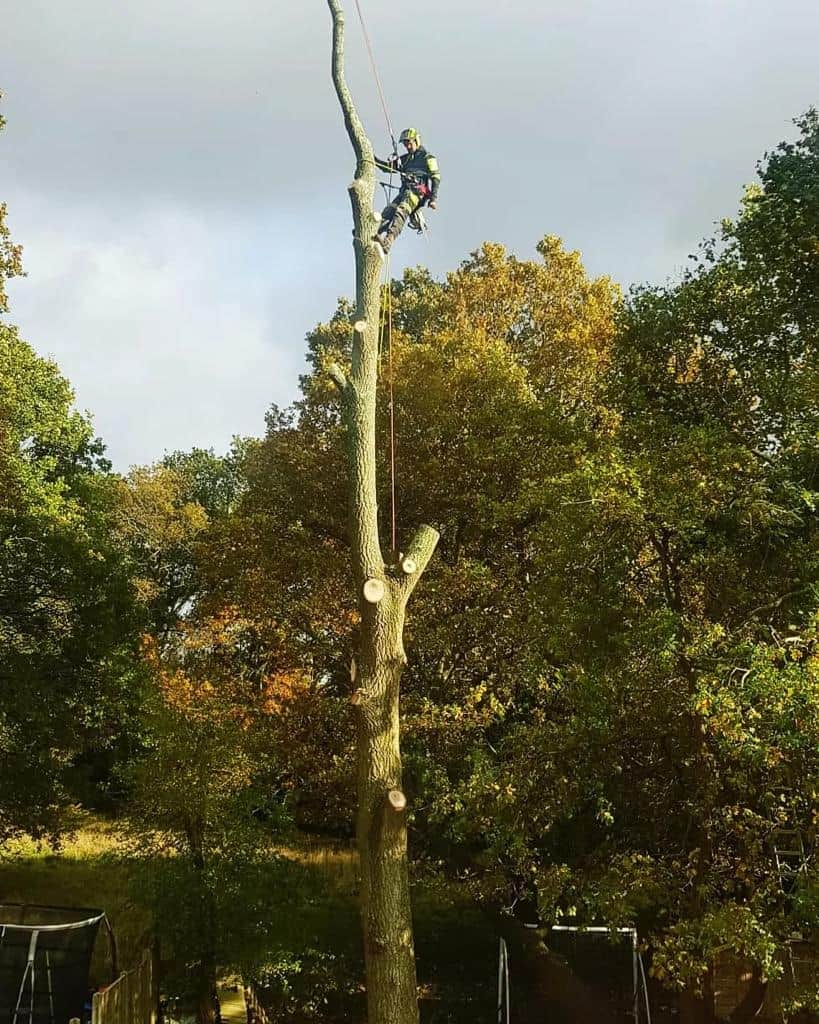Pruning is an essential aspect of tree care, ensuring healthy growth, structural stability, and overall vitality. However, over-pruning—a common mistake made by inexperienced gardeners and tree owners—can cause significant harm to trees. For property owners in Sherston, Gloucestershire, understanding the risks associated with over-pruning is crucial to maintaining the health and longevity of trees.
What Is Over-Pruning?
Over-pruning occurs when excessive foliage or branches are removed from a tree, disrupting its natural growth patterns. While pruning is intended to encourage healthy development, overdoing it can weaken the tree, making it more susceptible to stress, disease, and environmental factors.
The Risks of Over-Pruning
1. Loss of Vital Energy Sources
Leaves play a critical role in photosynthesis, the process by which trees produce energy. Removing too many leaves during pruning reduces the tree’s ability to generate food, leaving it weakened and struggling to grow.
2. Increased Vulnerability to Pests and Diseases
Over-pruning can create large, open wounds on a tree’s trunk or branches. These wounds take longer to heal, providing an entry point for pests and diseases. A weakened tree is less capable of defending itself against infestations or infections.
3. Reduced Structural Stability
Excessive removal of branches can disrupt the tree’s natural balance, making it more prone to structural instability. This increases the risk of branches breaking or the tree toppling during storms or high winds.
4. Sunscald and Heat Damage
Removing too much foliage exposes the tree’s trunk and branches to direct sunlight. This can lead to sunscald, where the bark is damaged by excessive heat, causing cracks and lesions that further weaken the tree.
5. Stunted Growth
Over-pruning can result in the removal of key growth points, hindering the tree’s ability to develop properly. This often leads to stunted growth, with the tree struggling to regain its natural shape and form.
6. Creation of Weak New Growth
Trees often respond to over-pruning by producing rapid, weak new growth in an attempt to recover. This growth is less stable and more prone to breakage, undermining the tree’s overall health and structure.
Signs of Over-Pruning
- Sparse foliage or excessive thinning.
- Large, exposed wounds on the trunk or branches.
- Rapid, weak new shoots growing from cut areas.
- Slow recovery and reduced growth.
Best Practices for Pruning
To avoid over-pruning and ensure the health of your trees, follow these best practices:
1. Limit Annual Pruning
No more than 25% of a tree’s foliage should be removed in a single pruning session. For mature trees, this percentage should be even lower to minimise stress.
2. Prune at the Right Time
The best time to prune depends on the tree species and its growth cycle. In general, late winter or early spring is ideal, as trees are dormant and less susceptible to stress.
3. Focus on Dead or Diseased Branches
Prioritise the removal of dead, damaged, or diseased branches to improve the tree’s health without over-pruning.
4. Use Proper Tools and Techniques
Ensure that all cuts are clean and made at the correct angle to promote healing. Avoid leaving stubs, as these can become entry points for pests and diseases.
5. Consult a Professional
For complex pruning tasks or large trees, hiring a professional tree surgeon is highly recommended. Professionals have the expertise and equipment to prune trees safely and effectively without causing harm.
Why Professional Tree Pruning Matters
Professional tree surgeons understand the delicate balance required during pruning to ensure a tree’s health and growth. They assess the tree’s condition, identify areas that need attention, and use precise techniques to avoid over-pruning.
Conclusion
While pruning is essential for maintaining the health and appearance of trees, over-pruning can have serious consequences, from stunted growth to increased vulnerability to pests and diseases. By following best practices and consulting professional tree surgeons, you can ensure your trees in Sherston, Gloucestershire, remain healthy, strong, and thriving. For expert advice and tree care services, contact EM Tree Surgery Sherston. Let us help you maintain the beauty and longevity of your trees with precision and care.
Call us on: 01666 337 167
Click here to find out more about EM Tree Surgery Sherston
Click here to complete our contact form and see how we can help with your trees needs.

